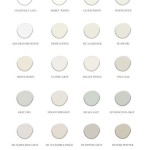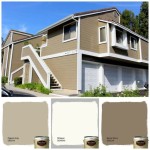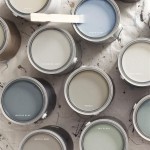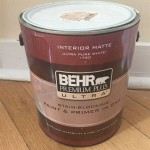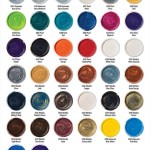What Color Should I Paint My Privacy Fence?
Choosing the right color for a privacy fence involves navigating a complex interplay of factors. Aesthetics, climate, neighborhood regulations, and the surrounding landscape all contribute to the optimal color choice. The color selected significantly impacts the visual appeal of a property, its integration with the environment, and even the longevity and maintenance requirements of the fencing material.
A poorly chosen color can detract from a home's curb appeal, clash with existing architectural elements, or prove impractical in the face of weather conditions. Conversely, a well-considered color choice can enhance a property's beauty, create a sense of harmony, and provide long-lasting protection for the fence itself. The following sections will delve into the key considerations when selecting a color to paint a privacy fence.
Understanding the Impact of Color Psychology
Color psychology plays a subtle yet significant role in shaping perceptions and influencing emotions. Different colors evoke different feelings, and understanding these associations can assist in choosing a fence color that complements the desired atmosphere of an outdoor space. For instance, cool colors, such as blues and greens, tend to promote a sense of tranquility and relaxation. Warm colors, like reds and yellows, can create a more energetic and inviting ambiance.
Neutrals, such as whites, grays, and browns, offer versatility and a sense of timelessness. White fences, for example, are often associated with cleanliness and sophistication, while gray fences can provide a contemporary and understated aesthetic. Brown fences blend seamlessly with natural surroundings, creating a sense of harmony with the landscape. The specific shade and tone of each color also contribute to its psychological effect. A light blue might feel airy and refreshing, while a dark blue might convey a sense of strength and stability.
Considering the intended purpose of the outdoor space and the desired emotional response can guide the selection of a color that enhances the overall experience. A garden designed for relaxation might benefit from a blue or green fence, while a patio intended for social gatherings might be enhanced by a warmer color palette.
Analyzing Architectural Style and Landscape
The architectural style of a home and the surrounding landscape are crucial factors in determining the ideal fence color. A fence should complement the existing color scheme of the house and integrate seamlessly with the natural environment. A starkly contrasting color can create a jarring effect, disrupting the visual harmony of the property.
For homes with traditional architectural styles, such as Victorian or Colonial, classic colors like white, cream, or light gray are often appropriate. These colors evoke a sense of timeless elegance and complement the intricate details often found in these architectural styles. For more modern or contemporary homes, bolder colors or darker shades of gray can create a striking contrast and enhance the clean lines of the structure.
The surrounding landscape also plays a significant role in color selection. If a property features lush greenery, a fence color that blends with the natural environment, such as a shade of brown or green, can create a sense of harmony. If the landscape is more arid or features a limited palette of colors, a contrasting color can provide visual interest and create a focal point. The color of nearby structures, such as sheds or garages, should also be considered to ensure a cohesive and harmonious aesthetic.
Factors such as the color of the roof, siding, and trim should be taken into account to create a unified and visually appealing exterior. In some cases, matching the fence color to the trim of the house can create a sense of cohesion, while in other cases, a complementary color can add visual interest without clashing.
Considering Practicality and Maintenance
Beyond aesthetics, practicality and maintenance requirements are essential considerations when choosing a fence color. Some colors are more susceptible to fading, staining, or showing dirt than others. Dark colors, for example, tend to absorb more heat, which can lead to premature fading and cracking of the paint. Light colors, on the other hand, may show dirt and mildew more readily.
The type of paint used also affects the longevity and maintenance requirements of the fence. High-quality exterior paints are designed to withstand the elements and resist fading, chipping, and peeling. Paints with UV inhibitors can help protect the fence from sun damage, while paints with mildewcides can prevent the growth of mold and mildew. Semi-gloss or gloss finishes are generally easier to clean than matte finishes, as they provide a smoother surface that resists dirt and grime.
The climate in which the property is located also plays a role in color selection. In areas with hot, sunny climates, lighter colors are often preferred as they reflect more heat and help to keep the fence cooler. In areas with cold, wet climates, darker colors may be more suitable as they can help to absorb heat and prevent the growth of ice and snow. The surrounding environment, such as proximity to roads or industrial areas, can also affect the maintenance requirements of the fence. Fences located near roads may be more susceptible to dirt and grime, requiring more frequent cleaning.
Furthermore, the material of the fence itself influences the choice of color. Wood fences, for example, can be stained or painted, offering a wide range of color options. Vinyl fences, on the other hand, are typically available in a limited range of colors, and painting them may require special preparation and priming. The type of paint or stain used should be compatible with the fencing material to ensure proper adhesion and long-lasting protection.
Navigating Neighborhood Regulations and HOA Guidelines
Before embarking on a fence painting project, it is essential to research local neighborhood regulations and Homeowners Association (HOA) guidelines. Many communities have specific rules regarding fence height, materials, and color. Violating these regulations can result in fines or even the requirement to repaint the fence in an approved color.
HOA guidelines are often more restrictive than local regulations, and they may specify a limited palette of approved fence colors. Some HOAs may even require homeowners to submit paint samples for approval before beginning the project. It is crucial to review these guidelines carefully and obtain any necessary approvals before painting the fence.
In the absence of specific regulations, it is still advisable to consider the surrounding neighborhood when choosing a fence color. A fence that clashes with the overall aesthetic of the neighborhood can detract from the curb appeal of the property and potentially lower property values. Opting for a color that complements the existing neighborhood palette can help to maintain a cohesive and harmonious look.
If there are no specific regulations or guidelines, it is still a good idea to consult with neighbors before painting the fence. This can help to avoid potential conflicts and ensure that the chosen color is acceptable to the community. Open communication and consideration for the neighbors' perspectives can contribute to a positive and harmonious living environment.
Testing Color Samples and Evaluating Lighting Conditions
Before committing to a specific fence color, it is highly recommended to test color samples in the actual outdoor environment. Paint colors can appear significantly different under different lighting conditions. The color that looks perfect in a home improvement store may appear too bright, too dark, or too saturated when applied to a fence exposed to direct sunlight, shade, or overcast skies.
Purchase small samples of several potential colors and apply them to a section of the fence. Observe the colors at different times of day and under varying weather conditions. Note how the colors interact with the surrounding landscape and architectural elements. Pay attention to how the colors appear in both direct sunlight and shade. Some colors may appear washed out in bright sunlight, while others may appear too dark in shaded areas.
Consider the direction the fence faces. A fence that faces south will receive more direct sunlight than a fence that faces north. This can affect the perceived color of the fence and its susceptibility to fading. A fence that faces east will be exposed to morning sunlight, while a fence that faces west will be exposed to afternoon sunlight. These variations in lighting conditions can influence the overall appearance of the fence.
In addition to testing paint samples on the fence itself, it is also helpful to create a mood board or visual representation of the desired outdoor space. This can help to visualize how the fence color will interact with other elements, such as landscaping, furniture, and outdoor lighting. A mood board can also serve as a valuable tool for communicating the desired aesthetic to paint professionals or contractors.
Considering the Size and Shape of the Fence
The size and shape of the privacy fence can also influence the optimal color choice. A large, expansive fence can dominate the visual landscape, making a bold color choice a risky proposition. In such cases, a more neutral or understated color may be preferable to avoid overwhelming the surrounding environment. Conversely, a smaller, more discreet fence may benefit from a bolder color that adds visual interest and creates a focal point.
The height of the fence also plays a role in color selection. A tall fence can create a sense of enclosure and privacy, while a shorter fence may feel more open and inviting. The color of a tall fence can significantly impact the perceived size and scale of the property. A dark color can make a tall fence appear even more imposing, while a light color can help to soften its visual impact.
The style of the fence can also influence the color choice. Picket fences, for example, are often painted white to evoke a sense of classic Americana. Board-on-board fences, on the other hand, can be painted in a variety of colors to complement the architectural style of the home. Lattice fences offer a more open and airy feel, and they can be painted in a color that blends with the surrounding landscape.
The texture of the fence can also affect the perceived color. A rough or textured surface will absorb more light than a smooth surface, making the color appear darker. A smooth surface will reflect more light, making the color appear lighter. When selecting a color, it is important to consider the texture of the fencing material and how it will affect the overall appearance of the fence.

5 Fence Paint Colors To Refresh Your Exterior Curb Appeal Wow 1 Day Painting

Choosing The Right Colour For Your Fence Makeovers

Should I Stain Or Paint My Fence Buzz Custom

Choosing The Right Colour For Your Fence Makeovers

Fence Paint Colours

Best Colour For Fences In Small Gardens

Do S And Don Ts For Choosing The Right Fence Colour Maria Killam

Colours For Painting Fence Use Deep To Draw Attention Express Co

What Color Should I Paint My Privacy Fence Flora Brothers Painting

5 Fence Paint Colors To Refresh Your Exterior Curb Appeal Wow 1 Day Painting
Related Posts

